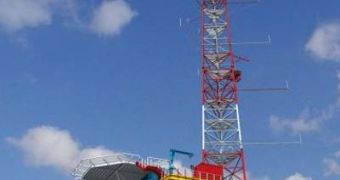Analyzing the behavior of sea waves is notoriously hard to do, and requires a bit of creative thinking on the part of scientists to perform. But experts at the Geesthacht GKSS Research Center, in Germany, have recently devised a new system of doing just that, which relies on radar antennas for studying the surface of waves around a station. The FINO3 research platform, currently located at the North Sea, is scheduled to house the first such specialized radar in a short while. The main goal of the instrument will be to determine the interactions between offshore wind power machines and swells.
According to the scientists in charge of the project, the FINO3 will be used approximately 80 kilometres to the west of Sylt, a location where many offshore wind farms will dot the surface of the water in only a few years. The environmental consequences and technical risks associated with these constructions are still unknown, and finding them out will be one of the new radar's primary missions. Among other objectives, the experts mentioned monitoring changes in the sea swell, observing bird migration, and measuring lighting strike frequencies in the open sea.
Suspended about 50 meters above sea level, on the FINO3 lattice mast, the new radar will for the first time provide individual wave tracking abilities, and will hopefully be able to determine how that future wind farm structures will influence sea swell and also how large, breaker waves will influence the blades and their towers. The research platform FINO3 will be constantly in contact with Geesthacht via satellite link so that researchers can keep a close eye on events when they happen.
There are numerous interactions to consider when building a wind farm offshore. For starters, each of the structures creates a powerful vortex around and behind it, which could interfere with the other generators by causing the air to vibrate. Additionally, the same air flows could interact with the waves underneath, making them behave unexpectedly and to cause damage to the structures supporting the turbines. “I am sure that we will soon be able to better assess the swells and the force of the breakers,” says GKSS Department Manager of Radar Hydrology Dr. Freidwart Ziemer.

 14 DAY TRIAL //
14 DAY TRIAL //